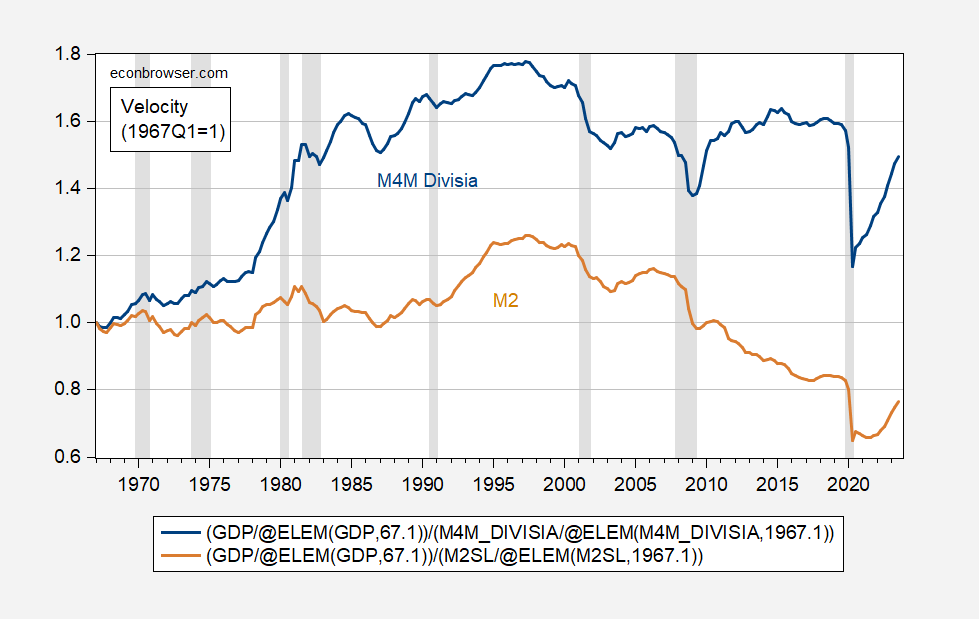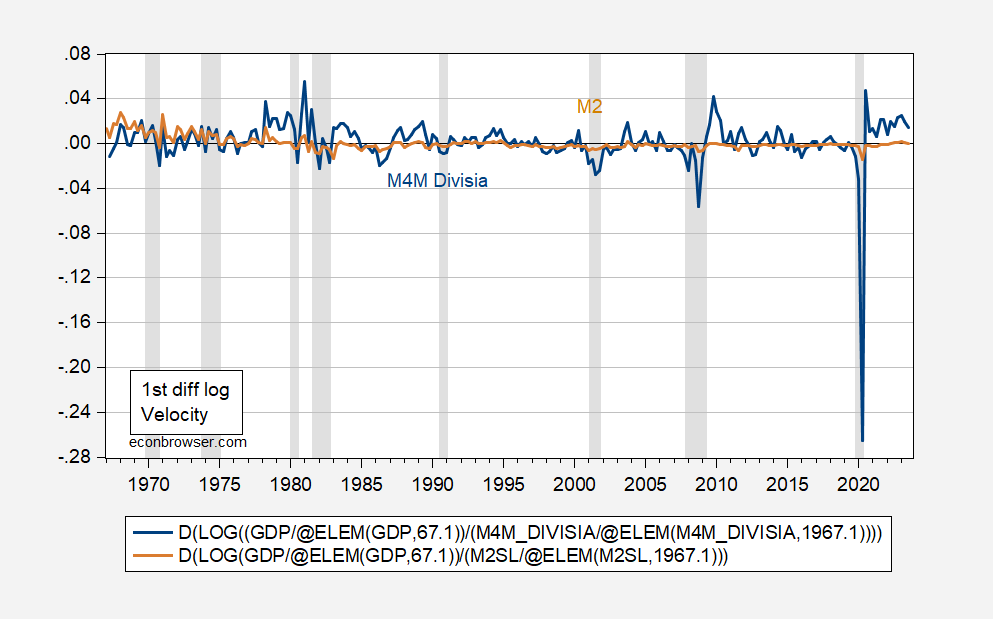
Courtesy of CFS, here is M4 Divisia velocity (rescaled to 1967Q1=1):
Figure 1: M4 Divisia velocity (blue), M2 velocity (tan), both 1967Q1=1. NBER defined peak-to-trough recession dates shaded gray. Source: CFS, Federal Reserve, BEA, NBER, and author’s calculations.
If by stability, one means (deterministic) trend stationarity, then the answer is no.
M4 divisia velocity fails to reject unit root (ADF w/constant, trend) null, and rejects trend stationarity (KPSS). True too for conventional M2 velocity. For comparison, M2 velocity is shown in Figure 1. The same results hold for M2 velocity.
As for the first difference, I don’t think either would count as stable, even if I(0). The standard deviation for differenced M4 Divisia velocity is 0.021, for M2 is 0.006. That means q/q changes (not at ARs) standard deviation is 2.1% (!). Even pre-pandemic, the former is 0.012, the latter 0.006.
Figure 2: First log difference of M4 Divisia velocity (blue), M2 velocity (tan). NBER defined peak-to-trough recession dates shaded gray. Source: CFS, Federal Reserve, BEA, NBER, and author’s calculations.
Source link






